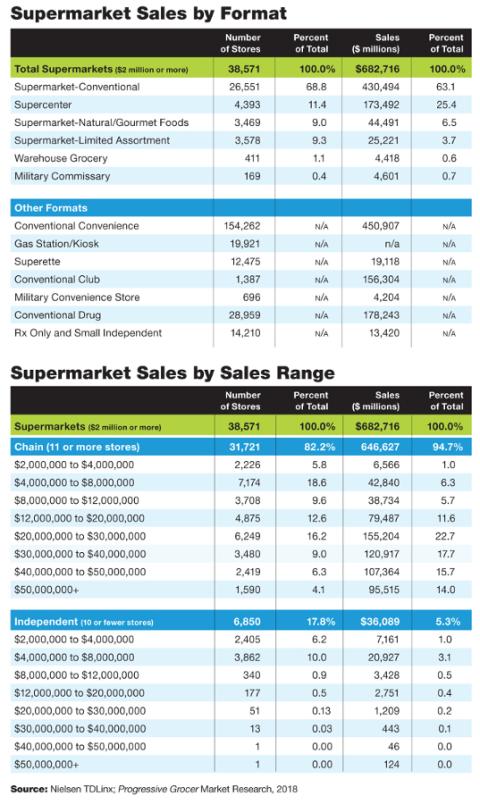Optimistic Outlook Isn’t Stopping Grocers in Race to Finish Line: Annual Report
(Editors' note: This is part one of a five-part series)
Consumer confidence is higher than it’s been since 2000, and it appears to be bolstering the mood of the nation’s grocery retailers.
Responses to Progressive Grocer’s 85th Annual Report of the Grocery Industry indicate that grocers are more optimistic about the current retailing climate than they have been since 2011. They started the year emboldened by tax reform that promised to free up cash to invest in their businesses and put more money in consumers’ pockets.
Read the Rest of the Report
Still, this rosy outlook may come as something of a surprise, considering events that have shaken the industry in the past year, including etailing giant Amazon’s emergence as a full-on player in grocery, from soup to nuts, through its acquisition of Whole Foods Market in late 2017; two regional grocery chains –Southeastern Grocers and Tops Markets– filing for bankruptcy; and German hard-discounter Lidl, which was expected to turn markets upside-down, scaling back its U.S. invasion plans after meeting less-than-expected success.
And while most of our survey respondents expect their net profits and gross margins to stay consistent with, or rise above, year-ago levels, the clear majority expect to be paying more in wages and benefits.
But despite a retail environment that promises to vanquish anyone caught napping, retailers, for the most part, are rising to the challenge. They’ve been forced to reassess their operations from every angle, accelerate the pace at which they innovate, streamline processes to free up resources for customer-focused initiatives, and bend over backwards to engage their shoppers, who crave convenience and excitement.
Just look at some of PG’s recent headlines on the news roller coaster leading up to this issue:

PG’s survey includes the responses of more than 140 retail grocery executives, including presidents. CEOs, c-level officials, store owners and managers, category managers and merchandisers, and store operations, sales, advertising and marketing executives. Amid the challenges of driving this $680 billion industry, grocery retailers are most worried about labor, competitive threats and keeping up with advancements in technology.
To stay relevant in turbulent competitive waters, traditional grocers continue to focus on fresh departments, particularly prepared foods, shoring up their core competencies in the perimeter while etail rivals keep wrestling with this part of the service equation. Tech solutions for merchandising and marketing are a priority, and omnichannel competency is surging.

In fact, while store remodels led investment priorities a year ago, tech upgrades and online shopping top the list for 2018 and beyond. That’s fortunate, in light of a Nielsen study, unveiled at the FMI Midwinter Executive Conference earlier this year, indicating that 70 percent of consumers will buy groceries online by 2024, accounting for $100 billion in sales.
Consumers in large part hold grocers in high esteem. In the 2018 “Harris Poll Reputation Quotient” study, grocery retailers held four spots among the top 10 companies across all categories with the best reputations among the general public: Wegmans at No. 2, H-E-B at No. 6, Publix at eighth and Aldi at 10th.
No. 1? Amazon.
Year after year, the phrase “cautiously optimistic” manages to make its way into assessments of retail leaders’ moods. But it has become increasingly clear that being too cautious is going to result in being left behind.
Does the Amazon revolution really mean the death of traditional retailing? Yes, but not necessarily the death of traditional retailers, provided they continue to aggressively pursue better ways to connect with and serve consumers – in other words, create a new tradition.
- 38 percent classify themselves as independent retailers, while 62 percent are self-distributing chains.
- Of the total respondents, 44 percent operate fewer than 50 stores, while 56 percent operate 50 stores or more.
- Additional store count and sales data are provided by Nielsen TDLinx, which maintains a national database of supermarket and other retail format locations.
Progressive Grocer’s 85th Annual Report of the Grocery Industry is based primarily on an exclusive survey conducted among executives at supermarket chain and independent operators across the United States. Among this year’s 144 retail executive participants:



